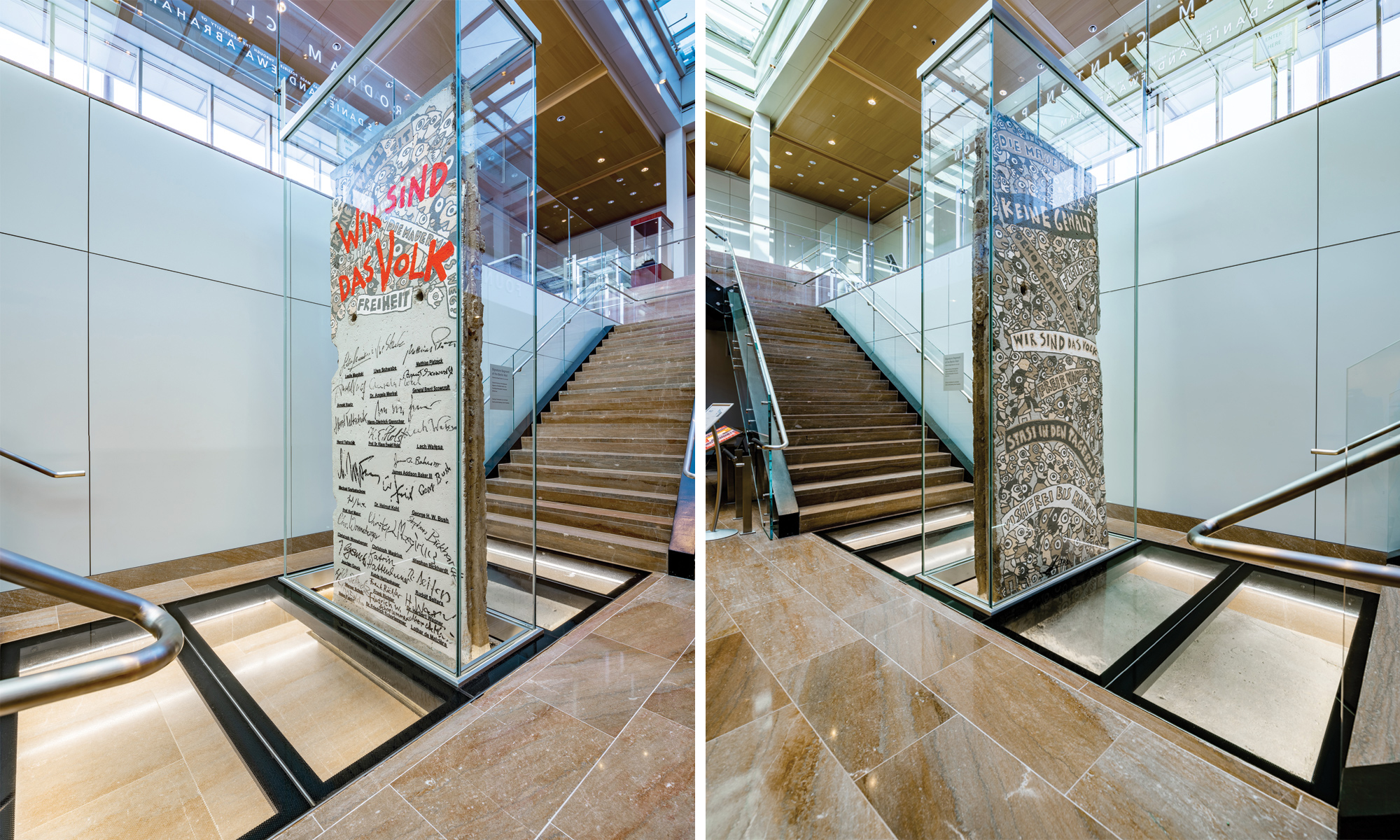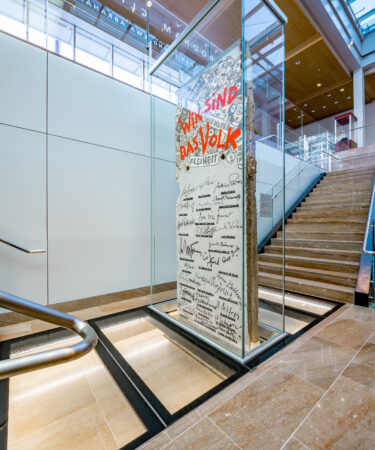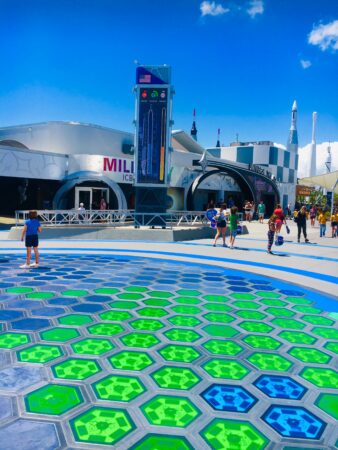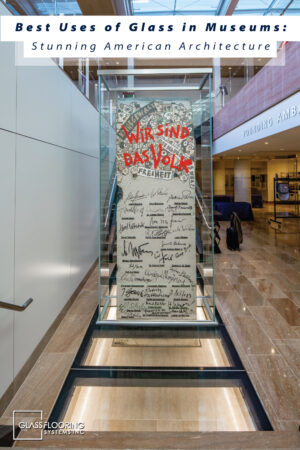
Museums across the country are embracing the elegance and innovation of glass to redefine how visitors engage with exhibits. From transparent flooring that creates immersive experiences to striking display enclosures, glass is becoming a hallmark of modern museum design. These installations not only showcase artifacts but also celebrate the evolving relationship between glass and American architecture, blending functionality with stunning visual appeal. Here’s how museums are using glass to inspire, educate, and connect audiences to history.
The Berlin Wall at the National Museum of American Diplomacy

At the National Museum of American Diplomacy, the “Signature Segment” of the Berlin Wall is displayed in a massive glass enclosure that commands attention. This striking example of glass architecture preserves the wall’s physical integrity while creating a sense of openness that invites reflection on its historical impact. The sleek display emphasizes the artifact’s scale and gravity, framing it in a way that complements both its physical presence and its symbolic weight. Visitors are given an unfiltered view from multiple angles, reinforcing the role of design in storytelling.
Holocaust Museum Houston: Walkable Glass Floor Around K123
At the Holocaust Museum in Houston, our custom-engineered walkable glass flooring enhances both design and emotion. Installed around the historic Danish rescue boat (K123), the glass flooring allows guests to look beneath the vessel, evoking the sense of its life-saving missions over dark seas during WWII. As visitors cross this unique architecture glass feature, they’re immersed in an environment that connects them directly to history. The glass floor seamlessly guides them to other key artifacts, including a WWII-era German railcar, turning pathways into narrative bridges. This project showcases how structural glass can transform museum spaces into unforgettable educational experiences.
Owens-Thomas House: Walk Across History
At the Owens-Thomas House in Savannah, walkable glass flooring offers visitors a fascinating window into the past. This installation allows guests to traverse modern glass panels while viewing the original floor preserved below. The contrast between old and new enhances appreciation of historical craftsmanship while protecting delicate materials from foot traffic. This arch glass design demonstrates how structural glass can merge preservation with accessibility, allowing people to experience historic sites without compromising their integrity.
National Soccer Hall of Fame: Elevated Perspectives
The National Soccer Hall of Fame leverages glass flooring to create unique vantage points for viewing its treasured sports artifacts. Transparent walkways and platforms provide bird’s-eye views of displays, enriching the visitor experience by adding visual depth and intrigue. This creative approach highlights how glass architecture can support storytelling in unexpected ways. By integrating glass into exhibit design, curators give audiences fresh perspectives and showcase artifacts in dynamic, innovative settings.
NASA Kennedy Space Center: Vanceva Colored Glass Tiles

At NASA’s Kennedy Space Center, colored glass tiles incorporating Vanceva Interlayers add energy and vibrancy to exhibit spaces. These tiles not only highlight NASA’s groundbreaking achievements but also inject a sense of modernity that reflects its forward-looking mission. The interplay of light and color within this design underscores how American architecture can integrate glass elements to elevate both aesthetic appeal and thematic expression. It’s a stellar example of glass installations transforming functional spaces into iconic, visually compelling environments.

From historic preservation to immersive storytelling, glass has become a defining feature of museum design. These installations show how glass can enhance American architecture by bridging past and present, enriching visitor engagement, and offering bold new design possibilities. As more museums embrace architecture glass solutions, they set the standard for how creativity and technology can merge to inspire future generations.
.png)




